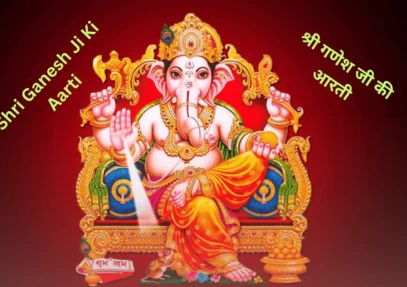Who was India’s first female astronaut?
The Gudimallam Shiva Lingam, located in Andhra Pradesh, India, is considered one of the oldest and most significant Shiva lingams in existence, with historical, archaeological, cultural, and spiritual importance. Historical and Archaeological Evidence Age and Dating: The Gudimallam Shiva Lingam is bRead more
The Gudimallam Shiva Lingam, located in Andhra Pradesh, India, is considered one of the oldest and most significant Shiva lingams in existence, with historical, archaeological, cultural, and spiritual importance.
Historical and Archaeological Evidence
- Age and Dating: The Gudimallam Shiva Lingam is believed to date back to the 3rd to 2nd century BCE, based on archaeological evidence and inscriptions found at the site. This places it in the pre-Hindu era or early phase of Hinduism. It is often cited as the earliest known representation of the Shiva Lingam, possibly predating the rise of the classical Hindu temple architecture and the iconography we associate with Shiva today.
- Artistic Features: Unlike the modern cylindrical Shiva lingams, the Gudimallam Shiva Lingam is a unique anthropomorphic figure. It is depicted as a human-shaped figure with a large, phallic structure and a seated figure of Lord Shiva carved in the stone, merging human and divine imagery. The figure portrays a very early form of the deity, showing a transitional phase in religious art from symbolic to anthropomorphic depictions. This representation is significant in tracing the evolution of Shiva worship in the Indian subcontinent.
- Inscriptions: Inscriptions found around the site refer to the temple and its association with early forms of Shaivism, providing further evidence of its antiquity. The region of Gudimallam has been a site of continued religious activity, with traces of both Buddhist and early Shaiva influences.
Cultural and Spiritual Significance
- Symbol of Shiva: The Gudimallam Shiva Lingam represents the earliest and most direct form of worship of Lord Shiva, symbolizing fertility, creation, and the infinite cosmic energy. It is considered a symbol of Lord Shiva’s Aghora (fearsome) aspect, connected to the idea of destruction and regeneration, essential concepts in Hindu cosmology.
- The Role of the Temple: The temple at Gudimallam has been a center of devotion for thousands of years. Over time, it has evolved into a spiritual hub for Shaivite practices. Pilgrims visit the site seeking blessings for personal and spiritual transformation, emphasizing the link between ancient traditions and contemporary worship practices.
- Cultural Heritage: The Shiva Lingam at Gudimallam is integral to understanding the historical development of Hindu temple architecture and religious iconography. It highlights the shift from earlier abstract representations of divine power to more anthropomorphic depictions of gods in physical form, marking a pivotal moment in religious history.
Why the Temple is Renowned
- Unique Representation of Shiva: The Gudimallam Shiva Lingam is renowned for its distinct form, combining a lingam and anthropomorphic features. Unlike typical Shiva lingams, this one integrates a human face and figure, illustrating early cultural attempts to personify divine beings.
- Religious and Pilgrimage Importance: The temple remains a pilgrimage site due to its deep spiritual connections with Shaiva traditions. It is believed that those who worship here receive Lord Shiva’s blessings for wisdom, protection, and prosperity.
- Architectural and Historical Interest: Gudimallam’s significance also lies in its architectural style, which blends regional design influences with early elements of temple building. This blend has made it a key archaeological and cultural site for understanding ancient Indian religious architecture.
The Gudimallam Shiva Lingam stands as a testament to ancient Shaivite worship, offering valuable insights into the evolution of religious practices, temple architecture, and spiritual iconography. Its archaeological evidence, along with its profound cultural and spiritual significance, makes it one of the oldest and most revered Shiva lingams in existence.
See less






India's first female astronaut was Kalpana Chawla, who, despite being born in India, was a U.S. citizen. She became the first woman of Indian origin in space as a NASA astronaut. Key Facts about Kalpana Chawla: Born: March 17, 1962, in Karnal, Haryana, India. NASA Career: Kalpana Chawla first flew iRead more
India’s first female astronaut was Kalpana Chawla, who, despite being born in India, was a U.S. citizen. She became the first woman of Indian origin in space as a NASA astronaut.
Key Facts about Kalpana Chawla:
Born: March 17, 1962, in Karnal, Haryana, India.
NASA Career: Kalpana Chawla first flew into space in 1997 aboard the Space Shuttle Columbia on mission STS-87. Her second mission was in 2003, again aboard Columbia on STS-107.
Tragic End: On February 1, 2003, during her second mission, the Space Shuttle Columbia disintegrated upon re-entry into Earth’s atmosphere, tragically ending the lives of all seven crew members.
Although Kalpana Chawla was an American citizen, her Indian heritage has made her an iconic figure in India. She remains a symbol of inspiration for people from India and around the world, particularly for women aspiring to excel in fields like science, technology, and space exploration.
See less